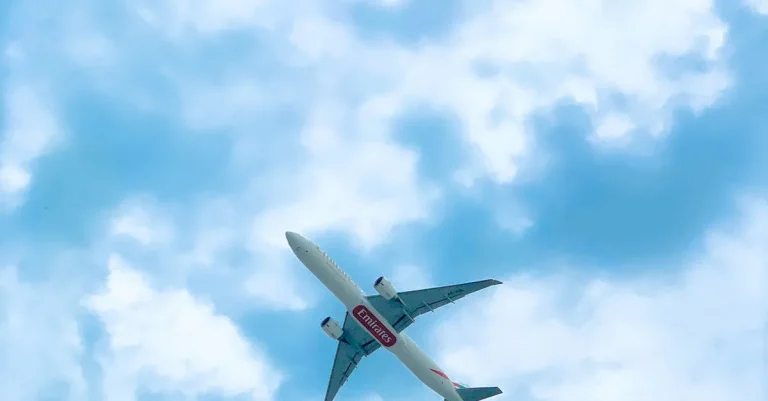In-car navigation systems have become widely popular over the past decade, providing drivers with real-time guidance to help them navigate to their destinations.
If you’re wondering whether navigation comes standard or is a paid add-on in today’s cars and trucks, here’s a quick answer: It depends on the vehicle make and model.
In this comprehensive guide, we’ll look at the prevalence of built-in navigation across major automotive brands, explore the costs of embedded and add-on GPS units, compare features, and provide tips for getting navigation in your next vehicle.
Built-In Navigation Systems
Regarding navigation systems in cars, built-in options offer convenience and ease of use. Let’s take a closer look at the benefits of built-in navigation systems.
Luxury Brands With Standard GPS
Many luxury car brands come equipped with built-in GPS as a standard feature. These include brands like Mercedes-Benz, BMW, Audi, and Lexus.
It eliminates the need for additional devices cluttering the dashboard and provides a sleek and seamless user experience.
Not only do luxury brands offer built-in GPS as a standard feature, but they also often include additional functionalities like real-time traffic updates, voice commands, and advanced route planning.
These features enhance the overall driving experience and make navigation a breeze, even in unfamiliar areas.
Mainstream Brands Offering Built-In Navigation
While built-in navigation systems were once exclusive to luxury brands, many mainstream car manufacturers are now offering this feature in their vehicles as well. B
Having a built-in navigation system in mainstream brands can be a great convenience for drivers who rely heavily on GPS guidance. It eliminates the need to purchase and install aftermarket devices or rely solely on smartphone navigation apps.
Additionally, built-in systems often have larger screens and more user-friendly interfaces compared to add-on GPS devices.
It’s important to note that while built-in navigation systems offer convenience, they may come at an additional cost. Some luxury brands include GPS as a standard feature, while others offer it as part of a higher trim package.
Mainstream brands may offer it as an optional feature, which could increase the overall cost of the vehicle.
Add-On GPS Units
Costs of Aftermarket Navigation Systems
If you’re considering adding a GPS unit to your car, you may be wondering about the costs involved. Add-on GPS units can vary widely in price, depending on the brand, features, and quality. On average, you can expect to pay anywhere from $100 to $500 for a standalone GPS unit.
However, it’s important to note that the price of the unit itself is not the only cost you need to consider. You may also need to factor in additional costs such as map updates, which can range from $50 to $100 per year, depending on the manufacturer.
Additionally, if you opt for a portable GPS unit, you may also need to purchase additional accessories such as a mount or a carrying case.
It’s worth mentioning that while add-on GPS units may seem like a more affordable option upfront, they can end up being more expensive in the long run when you factor in these additional costs.
On the other hand, built-in GPS systems often come with free map updates and require minimal additional expenses.

Comparing Built-In vs Add-On Navigation
Ease of Use
One of the key factors to consider when comparing built-in and add-on navigation systems is the ease of use. Built-in navigation systems are seamlessly integrated into the car’s dashboard, often with a touchscreen interface.
This makes them convenient and user-friendly, as drivers can easily access and control the navigation system without distraction.
On the other hand, add-on navigation systems typically require additional hardware or devices to be attached to the car’s dashboard or windshield.
While they may offer similar functionality, they may not be as intuitive or as seamlessly integrated as built-in systems.
Features and Functionality
When it comes to features and functionality, both built-in and add-on navigation systems offer a range of options. Built-in navigation systems often come with a wide variety of features, such as real-time traffic updates, voice-guided directions, and points of interest.
They may also have advanced features like lane guidance and 3D maps.
Add-on navigation systems, on the other hand, may vary in terms of features and functionality depending on the brand and model.
Some add-on systems may offer basic navigation features, while others may have advanced features similar to built-in systems.
It’s important to compare the specific features and functionality of different navigation systems to determine which one best suits your needs.
Upfront vs Long-Term Costs
Another important consideration when comparing built-in and add-on navigation systems is the cost. Built-in navigation systems are typically included as part of the car’s overall package, meaning there’s no additional cost upfront.
However, it’s worth noting that the cost of built-in systems is often factored into the overall price of the car. On the other hand, add-on navigation systems can be purchased separately and installed in existing cars.
While the upfront cost of an add-on system may be lower compared to a built-in system, there may be additional costs involved, such as map updates or subscription fees for certain features.
It’s important to consider both the upfront and long-term costs when making a decision.
Tips for Getting Navigation in Your Next Car
Check Your Desired Model’s Features
When you’re in the market for a new car and you want built-in navigation, it’s important to check the features of your desired model.
Not all cars come equipped with navigation systems as standard. Many higher-end models may include built-in GPS navigation as part of their technology package, while lower-end models might not offer it at all.
Before making a purchase, research the specifications of the car you’re interested in to ensure that it includes the navigation system you desire.
Compare Dealer Installation Costs
If your desired car model doesn’t come with built-in navigation, you may have the option to have it installed by the dealer.
It’s essential to compare the installation costs offered by different dealerships. Prices can vary significantly, so it’s worth shopping around to find the best deal.
Additionally, ask about any warranties or guarantees that come with the installation, as this can provide you with added peace of mind.
Consider Aftermarket GPS Companies
If the dealer installation costs are too high or you prefer a different GPS system, consider aftermarket options.
There are several reputable GPS companies that offer add-on navigation systems for cars. These systems can be easily installed and provide similar functionality to built-in systems.
Companies such as Garmin, TomTom, and Magellan offer a range of GPS devices that can be mounted on your car’s dashboard or windshield. Before purchasing, read reviews and compare prices to find the best option for your needs.
Conclusion
Whether you opt for built-in or add-on navigation, having an in-car GPS can provide valuable direction and location capabilities while driving. Carefully compare options to choose the best navigation system for your needs and budget.
And don’t forget to also weigh the costs of data plans and map updates to maximize the usefulness of your selected GPS over time.






